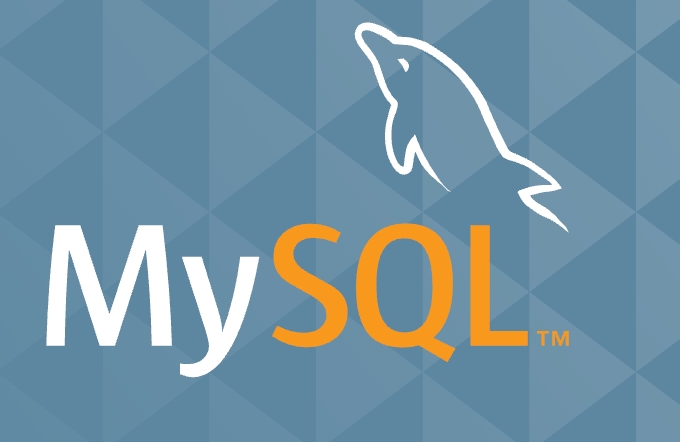MySQL Cluster vs. Group Replication: A Comparative Analysis
Aug 01, 2025 am 05:09 AMMySQL Cluster is more suitable for high concurrency and low latency scenarios, and uses a distributed architecture to support data sharding and fast failover; Group Replication emphasizes data consistency, which is suitable for scenarios with high consistency requirements, and implements multi-node synchronous replication based on Paxos. 1. MySQL Cluster adopts a shared-nothing architecture, supports automatic sharding and online expansion, which is suitable for telecommunications and real-time billing systems; 2. Group Replication saves complete data for each node, guarantees consistency through majority consensus, and is suitable for financial transaction systems; 3. Group Replication checks consistency before submission, and quickly selects the master in case of failure, while Cluster communicates asynchronously or semi-synchronously, with low latency but may be temporarily inconsistent; 4. Group Replication is simple to deploy but sensitive to network latency, and Cluster is complex to deploy and requires in-depth optimization; 5. If you pursue consistency and have weak operation and maintenance capabilities, choose Group Replication. If you have a strong technical team and need a high-performance scalable platform, choose Cluster.

MySQL Cluster and Group Replication are both highly available solutions provided by MySQL, but they vary significantly in architecture design, applicable scenarios and performance. If you are considering which solution to deploy to ensure the stability of your database service, you must first understand the core mechanisms and their respective advantages of these two technologies.

Different architecture principles determine the usage scenario
MySQL Cluster (NDB Cluster) is a distributed database system with shared-nothing architecture. It stores data fragments in multiple nodes and supports automatic failover and online expansion. Suitable for applications that require extremely high concurrent read and write and low latency response, such as telecommunications, real-time billing systems, etc.
Group Replication is a synchronous replication mechanism between a set of MySQL instances implemented based on the Paxos protocol. Each node saves a complete copy of the data and supports multi-write mode. It is suitable for business scenarios with high consistency requirements and moderate data volume, such as financial transaction systems.

Simply put:
- Cluster emphasizes distribution and expansion
- Group Replication emphasizes consistency and error tolerance
Data consistency and failure recovery mechanism are different
Group Replication will perform consistency verification before transaction submission to ensure that most nodes only submit after reaching consensus, thus providing stronger data consistency guarantees. Once a node fails, the cluster can quickly select a new master and continue to provide services.

MySQL Cluster uses asynchronous or semi-synchronous methods to handle cross-node communication. Although the overall delay is low, short-term data inconsistency may occur when network partitions or nodes are down. However, its automatic failover speed is very fast and can usually switch in seconds.
For example:
If your application cannot tolerate even a dirty read, Group Replication will be better for you; but if you value the continuous availability and high performance of the system, Cluster may be a better choice.
Performance and operation complexity have their own focus
Group Replication is relatively simple to deploy. You only need to configure the replication channel and group communication parameters of each node to start. However, it is more sensitive to network latency, especially in multi-write mode, which is prone to conflicts and causes transaction rollback.
Although MySQL Cluster is powerful, the threshold for deployment and tuning is high. You need to understand the contents of multiple levels such as data sharding strategy, memory management, node role division, etc. In addition, the NDB engine and traditional InnoDB have a large difference in behavior and the migration cost is not small.
A few suggestions:
- If you are pursuing out-of-the-box and have strict consistency requirements → Choose Group Replication
- If you have a strong technical team and want to build a high-performance, scalable database platform → try Cluster
- If your application has high write pressure and tolerate slight delay consistency → Cluster is more suitable
Basically that's it. Neither solution is omnipotent. The key to selection is to clarify one's business needs and technical capabilities.
The above is the detailed content of MySQL Cluster vs. Group Replication: A Comparative Analysis. For more information, please follow other related articles on the PHP Chinese website!

Hot AI Tools

Undress AI Tool
Undress images for free

Undresser.AI Undress
AI-powered app for creating realistic nude photos

AI Clothes Remover
Online AI tool for removing clothes from photos.

Clothoff.io
AI clothes remover

Video Face Swap
Swap faces in any video effortlessly with our completely free AI face swap tool!

Hot Article

Hot Tools

Notepad++7.3.1
Easy-to-use and free code editor

SublimeText3 Chinese version
Chinese version, very easy to use

Zend Studio 13.0.1
Powerful PHP integrated development environment

Dreamweaver CS6
Visual web development tools

SublimeText3 Mac version
God-level code editing software (SublimeText3)

Hot Topics
 Establishing secure remote connections to a MySQL server
Jul 04, 2025 am 01:44 AM
Establishing secure remote connections to a MySQL server
Jul 04, 2025 am 01:44 AM
TosecurelyconnecttoaremoteMySQLserver,useSSHtunneling,configureMySQLforremoteaccess,setfirewallrules,andconsiderSSLencryption.First,establishanSSHtunnelwithssh-L3307:localhost:3306user@remote-server-Nandconnectviamysql-h127.0.0.1-P3307.Second,editMyS
 Understanding the role of foreign keys in MySQL data integrity
Jul 03, 2025 am 02:34 AM
Understanding the role of foreign keys in MySQL data integrity
Jul 03, 2025 am 02:34 AM
ForeignkeysinMySQLensuredataintegritybyenforcingrelationshipsbetweentables.Theypreventorphanedrecords,restrictinvaliddataentry,andcancascadechangesautomatically.BothtablesmustusetheInnoDBstorageengine,andforeignkeycolumnsmustmatchthedatatypeoftherefe
 Performing logical backups using mysqldump in MySQL
Jul 06, 2025 am 02:55 AM
Performing logical backups using mysqldump in MySQL
Jul 06, 2025 am 02:55 AM
mysqldump is a common tool for performing logical backups of MySQL databases. It generates SQL files containing CREATE and INSERT statements to rebuild the database. 1. It does not back up the original file, but converts the database structure and content into portable SQL commands; 2. It is suitable for small databases or selective recovery, and is not suitable for fast recovery of TB-level data; 3. Common options include --single-transaction, --databases, --all-databases, --routines, etc.; 4. Use mysql command to import during recovery, and can turn off foreign key checks to improve speed; 5. It is recommended to test backup regularly, use compression, and automatic adjustment.
 Analyzing the MySQL Slow Query Log to Find Performance Bottlenecks
Jul 04, 2025 am 02:46 AM
Analyzing the MySQL Slow Query Log to Find Performance Bottlenecks
Jul 04, 2025 am 02:46 AM
Turn on MySQL slow query logs and analyze locationable performance issues. 1. Edit the configuration file or dynamically set slow_query_log and long_query_time; 2. The log contains key fields such as Query_time, Lock_time, Rows_examined to assist in judging efficiency bottlenecks; 3. Use mysqldumpslow or pt-query-digest tools to efficiently analyze logs; 4. Optimization suggestions include adding indexes, avoiding SELECT*, splitting complex queries, etc. For example, adding an index to user_id can significantly reduce the number of scanned rows and improve query efficiency.
 Handling NULL Values in MySQL Columns and Queries
Jul 05, 2025 am 02:46 AM
Handling NULL Values in MySQL Columns and Queries
Jul 05, 2025 am 02:46 AM
When handling NULL values ??in MySQL, please note: 1. When designing the table, the key fields are set to NOTNULL, and optional fields are allowed NULL; 2. ISNULL or ISNOTNULL must be used with = or !=; 3. IFNULL or COALESCE functions can be used to replace the display default values; 4. Be cautious when using NULL values ??directly when inserting or updating, and pay attention to the data source and ORM framework processing methods. NULL represents an unknown value and does not equal any value, including itself. Therefore, be careful when querying, counting, and connecting tables to avoid missing data or logical errors. Rational use of functions and constraints can effectively reduce interference caused by NULL.
 Resetting the root password for MySQL server
Jul 03, 2025 am 02:32 AM
Resetting the root password for MySQL server
Jul 03, 2025 am 02:32 AM
To reset the root password of MySQL, please follow the following steps: 1. Stop the MySQL server, use sudosystemctlstopmysql or sudosystemctlstopmysqld; 2. Start MySQL in --skip-grant-tables mode, execute sudomysqld-skip-grant-tables&; 3. Log in to MySQL and execute the corresponding SQL command to modify the password according to the version, such as FLUSHPRIVILEGES;ALTERUSER'root'@'localhost'IDENTIFIEDBY'your_new
 Calculating Database and Table Sizes in MySQL
Jul 06, 2025 am 02:41 AM
Calculating Database and Table Sizes in MySQL
Jul 06, 2025 am 02:41 AM
To view the size of the MySQL database and table, you can query the information_schema directly or use the command line tool. 1. Check the entire database size: Execute the SQL statement SELECTtable_schemaAS'Database',SUM(data_length index_length)/1024/1024AS'Size(MB)'FROMinformation_schema.tablesGROUPBYtable_schema; you can get the total size of all databases, or add WHERE conditions to limit the specific database; 2. Check the single table size: use SELECTta
 Handling character sets and collations issues in MySQL
Jul 08, 2025 am 02:51 AM
Handling character sets and collations issues in MySQL
Jul 08, 2025 am 02:51 AM
Character set and sorting rules issues are common when cross-platform migration or multi-person development, resulting in garbled code or inconsistent query. There are three core solutions: First, check and unify the character set of database, table, and fields to utf8mb4, view through SHOWCREATEDATABASE/TABLE, and modify it with ALTER statement; second, specify the utf8mb4 character set when the client connects, and set it in connection parameters or execute SETNAMES; third, select the sorting rules reasonably, and recommend using utf8mb4_unicode_ci to ensure the accuracy of comparison and sorting, and specify or modify it through ALTER when building the library and table.






